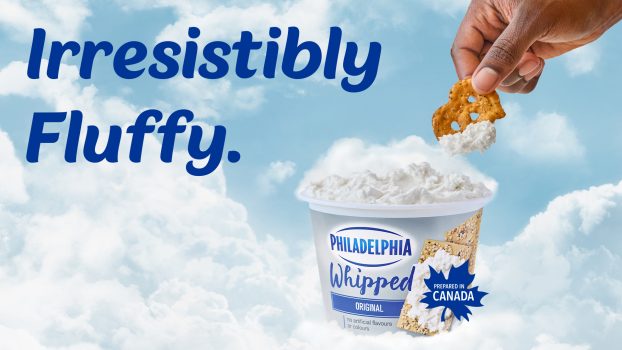You crave a salty snack, but you’re watching your waistline. How about some broccoli-flavoured potato chips? North American snack, beverage and fast-food marketers are beginning to introduce better-for-you offerings – veggie-laced potato chips potentially among them – in response to burgeoning concerns about obesity, and subsequent consumer yearnings for healthier alternatives.
This summer, the U.S. Surgeon-General warned that obesity had reached epidemic proportions south of the border – 61% of Americans are now significantly overweight, compared with 55% in the early 1990s, and the excess girth is costly, generating US$117 billion in annual medical bills.
While Canada’s collective waistline is slimmer, the pounds are packing on here too. Obesity Canada, an organization developed by a team of healthcare professionals, reports on its Web site that between 10% and 25% of all teens and 20% to 50% of all adults are overweight.
Critics surface
As a reaction to the hefty numbers, many special-interest groups have become publicly critical of so-called ‘junk food’ marketers, who they believe contribute to the crisis with indulgent treats supported by huge marketing dollars. Kalle Lasn, founder, publisher and editor in chief of Vancouver-based Adbusters magazine, says junk food will confront the same pressures that big tobacco has in the past, which will lead to government restrictions on advertising. He says, ‘For many years, tobacco was the big pariah industry and it took a while to wrestle it down to the point where it’s on the defensive. I believe…junk food won’t be far behind.’
Despite the fact that chow isn’t in quite the same category as tobacco – it’s not a ‘killer product,’ Lasn says – parents now recognize the relationship between junk food marketing and health problems related to obesity. ‘Parents realize there is a huge industry that recruits young people at a very early age,’ he says. ‘They realize that this kind of advertising pressure influences kids as they grow up. Parents need to take back the nutritional agenda.’
In some cases, they are attempting to do that. Medical experts in Europe, for instance, are asking the European Union to ban advertising for food and drinks that are targeted at children, while in the ever-litigious U.S., citizens are suing McDonald’s again, this time blaming the fast-food giant for their stout statures. A recent lawsuit condemns the restaurant chain’s ad campaigns, specifically Happy Meal toy premiums, for enticing young consumers.
Not wild about Harry and Coke
For similar reasons, Coca-Cola came under fire last year when 40-odd organizations from around the world banded together to rebuke its promotional tie-in with the Harry Potter and the Sorcerer’s Stone flick from Warner Bros. A Web site called SaveHarry.com was established in the U.S.; it invited visitors to sign a petition to Harry Potter author J.K. Rowling, which declared that ‘Coke and other soft drinks are JUNK and certainly not what Harry would want kids to drink.’
Susan McDermott, a spokesperson for Coke in Atlanta, says the soft drink manufacturer responded with its own PR effort to ensure media published its side of the story. She adds that the objective of the promo was to give back to the community in that it included a program to set up libraries in American schools. ‘For someone to characterize that relationship as inappropriate and to infer a connection to the health and wellness of children missed the point for the sake of sensationalism,’ she says.
Recently Coke’s second Harry Potter initiative, in conjunction with the film Harry Potter and the Chamber of Secrets, hit the airwaves. The advertising was produced in New York by McCann-Erickson and adapted for Canadian viewership by MacLaren McCann, Toronto. McDermott believes the alliance is a natural fit because both properties ‘share the same values about being with friends and families.’
On the Canuck menu
So far Canadian consumers have been less vocal about junk food advertising; Coke Canada received no complaints about the Harry Potter campaign last year and no ‘obesity’ lawsuits have been filed. But there are definite indications that Canadians are interested in eating better.
A Heart and Stroke Foundation of Canada /ACNielsen survey released in early 2002 found that 74% of Canadians planned to improve their eating habits over the next year. Meanwhile, numbers from Toronto-based market research firm NPD Group suggest they were already on that path: consumers gulped down carbonated soft drinks 102.9 times in Sept. 2001, compared to 117.3 times in Sept. 1998; on the other hand, consumption of juices/ades/drinks rose, from 193.1 to 197.8.
‘People want to know more about the products that they put in their bodies,’ explains Susan Murray, director of brand strategy at Toronto-based Spencer Francey Peters. ‘There is a trend happening in terms of information requests, and I do think that marketers in the junk food arena need to consider adjusting their strategies to meet those unmet customer needs.’
She suggests ‘simple solutions be put in place to speak to concerns that [the lawsuits] are actually raising, like clear information of the product, [and] understanding of the ingredients.’
Healthy options
Murray points out that some companies, like McDonald’s and Frito-Lay, are also venturing into healthy-eating territory, ‘which is a necessary move in terms of positioning themselves as a choice for a future customer base.’
Toronto-based McDonald’s Restaurants of Canada invested heavily in its Lighter Choices menu this summer and thus far, the lineup, including a veggie burger, chicken sandwich and salads, has performed well, accounting for approximately 6% of overall sales. ‘The response has been great,’ says Neil Everett, VP marketing. ‘We’re just finalizing our 2003 plans, and there will be a significant focus on Lighter Choices [next year] with new line extensions. In terms of improving the food perception at McDonald’s, we [offered] a lot of choice.’
Last month, the QSR announced it would also cut back on its use of trans fatty acids (TFA) and saturated fats through the introduction of a new vegetable oil. This measure will be fully implemented nationwide by 2003, and is part of McDonald’s global TFA reduction plan.
South of the border, Plano, Texas-based Frito-Lay recently announced its commitment to developing ‘better-for-you’ snacks; it is eliminating trans fats from Doritos, Tostitos and Cheetos, as well as debuting Lay’s chips and Cheetos in ‘reduced fat’ options (25% less fat) in December.
In early 2003, Frito-Lay’s snack packaging will include nutritional and fitness tips from Kenneth Cooper, an expert on health and fitness and founder of the Dallas-based Cooper Aerobics Center, while a youth fitness program created by Frito-Lay and the center is also in the works. The snack manufacturer is also reportedly considering the notion of potato chips fortified with vegetables, like broccoli and carrots.
But do people actually want ‘better-for-you’ munchies? According to The Wall Street Journal, low-fat options, such as baked potato chips and pretzels already account for 20% to 25% of Frito-Lay’s sales, and sales volume for those items are up 20% so far this year. (Frito-Lay also made up more than two-thirds of parent company PepsiCo’s profits last year.)
Ken Wong, strategic marketing professor at Queen’s University in Kingston, Ont., says that in some cases these lighter eats might appease a consumer’s conscience, but with some smaller efforts he views the strategy as a defensive manoeuvre against recent public charges. ‘Sometimes you do things because you feel you need to show a passing concern to defend yourself in the public eye, against being the charlatan that trades on people’s nutritional welfare in the interest of making a buck,’ he says.
Healthy drinks
On the beverage side, PepsiCo has also been mixing healthy doses into its recipes; in July it unveiled Tropicana Pure Premium Healthy Kids juice south of the border. Vitamins A and E, plus calcium have all been blended into the OJ. ‘People are becoming aware of what they’re putting into their mouths, particularly with the obesity epidemic that we now hear about daily,’ says Baradenton, Fla.-based spokesperson Christine Nickel.
Healthy Kids was one of the most successful launches in the history of Tropicana; the beverage was promoted through TV and magazine ads, which were created by Chicago agency Element 79 and revolve around a poem called Children Learn What They Live by Dorothy Law Nolte. ‘The key message is that the juice provides essential nutrition for growing kids,’ says Nickel, adding that an on-pack promo also enabled buyers to send away for a free book from Scholastic.
Here in Canada, Pepsi’s Gatorade brand was recently poured into kid-friendly bottles and Tetra Paks. ‘Our Gatorade Kid’s Pack…helps keep on-the-go kids hydrated and healthy,’ says Steve Taylor, group marketing manager for Toronto-based Gatorade Equity. He adds the beverage was given the green light after research indicated kids were getting into sports earlier, but there weren’t any sports-drink products on the market aimed at them. During back-to-school, Gatorade Kids was displayed in grocery stores with P-O-P featuring Toronto Raptors star Vince Carter. ‘It was about leveraging our sports history to get noticed in-store,’ explains Taylor.
Toronto-based Coca-Cola Canada also joined the fray with a stronger push this summer when it uncapped Mad River Beverages, offering 18- to 29-year-old active urban dwellers enhanced juices with guarana, ginseng and echinacea. ‘We felt that the [fruit and tea beverage] category would continue to fragment and there was a clear opportunity for a product that was more authentic,’ explains Chris Johnston, director of marketing. ‘Mad River is made with pure cane sugar which is very attractive to consumers who want more of an all-natural fruit flavour.’
The launch was supported with transit and radio advertising in major urban centres, but Johnston hints the company will take more ‘risk’ with the marketing strategy next year. ‘We believe that this brand is all about being down to earth, approachable and really authentic…. The marketing mix will reflect that,’ he says, although he adds that ‘we don’t make overt health claims in our communication at this time.’
Rules changing
That’s probably because Coke can’t, due to strict federal regulations. But that’s about to change and it’s likely to open the door for increased activity in the ‘better-for-you’ snack category. Industry associations like the Food and Consumer Products Manufacturers of Canada (FCPMC) have been successful in lobbying Health Canada to ‘modernize’ nutritional labelling, says Laurie Curry, VP public policy and scientific affairs and a registered dietician with the organization. The changes are expected to outline more health details – for instance, that added calcium helps reduce the risk of osteoporosis.
By early 2003, they should be in effect, although newly labelled foodstuffs won’t hit the shelves for two or three more years.
Overall, snack food and beverage manufacturers view this as an opportunity to present more choices in the marketplace, points out Curry. ‘Canada has a very large manufacturing base for functional foods with additional benefits, but we can’t market them in this country, and as a result they aren’t sold in this country,’ she says. ‘If you can’t tell consumers what’s unique about the product, you won’t be able to sell it, so the consequence is you don’t.’
(For her part, Tropicana’s Nickel suggests the new regulations would make it more viable to market juices like Healthy Kids in this country. ‘The change will be good,’ she says, ‘because right now these types of foods are treated as drugs in Canada.’)
When the labelling changes occur, the FCPMC will educate shoppers in collaboration with healthcare professionals through point-of-purchase signs, brochures and in-store tours led by dieticians.
John Bradley, director of marketing at Cadbury Trebor Allan in Toronto, is looking forward to the day, because he believes candy is unfairly targeted as contributing to obesity when goodies like Fuzzy Peaches are in fact fat free. ‘Only 3% of the average fat intake in North America comes from confectionery,’ he says. ‘So nutritional information…will help us demonstrate that confectionery isn’t the root of all fat intake as people think it is.’
But while most of that teaching will come through public relations and industry bodies like the FCPMC, he says there will be no changes to Cadbury’s advertising strategy. ‘We make a lot of unashamedly indulgent chocolate bars, and an indulgent chocolate bar that is good for you has always been the holy grail of the market,’ he quips. ‘I have faith in consumers that they make trade-offs – having a Caramilk every Friday isn’t going to change the way you look, but it could change your outlook on life.’
Besides, sometimes the sinful trait of indulgent treats is half the fun in eating them.






















